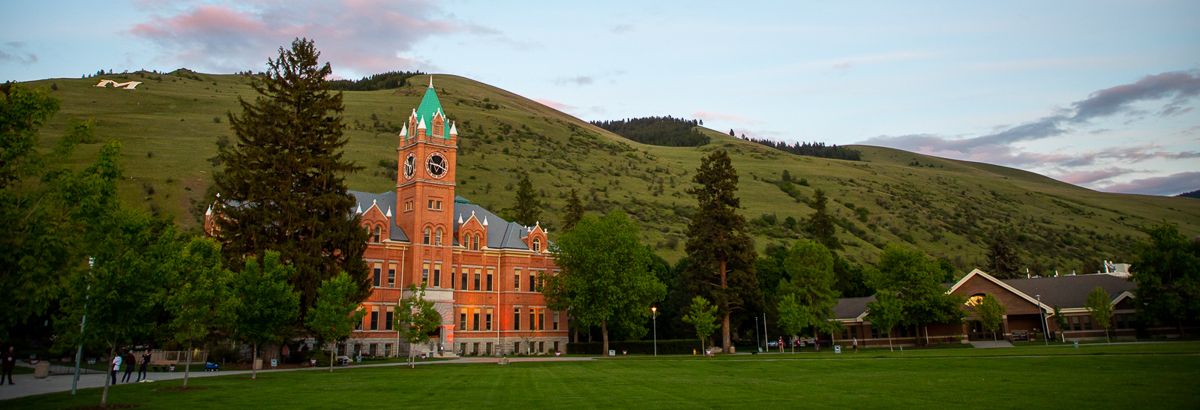Learning Outcomes
Assessment is an ongoing, programmatic improvement process at the Ñý¼§Ö±²¥. Our accrediting agency, the Northwest Commission on Colleges and Universities (NWCCU), requires us to focus on the quality and effectiveness of our academic programs.
In our 2024 NWCCU Evaluation of Institutional Effectiveness, the Ñý¼§Ö±²¥ received the following recommendation:
Develop an inclusive and integrated University-wide framework to assess student learning outcomes at the program and degree level that is distinct from the use of student achievement data and metrics.” (2020 Standard(s) 1.C.7)
To address this recommendation, the first step is to ensure all programmatic student learning outcomes are current and published in the catalog, per Standard 1.C.4:
The institution identifies and publishes expected program and degree learning outcomes for all degrees, certificates, and credentials. Information on expected student learning outcomes for all courses is provided to enrolled Ñý¼§Ö±²¥.
Updating and Submitting Program Learning Outcomes
- New Program Proposals: All new program proposals must describe student learning outcomes in CourseLeaf.
- Program Modifications: Program modifications must include existing or newly developed program outcomes, along with the proposed catalog updates. Existing program outcomes can be found in your unit’s most recent departmental assessment report.
Development and Revision
When developing or revising program learning outcomes, it is important to keep them focused and assessable. Consider limiting the number of outcomes to about one for every 9-12 credits. This helps ensure that each outcome is meaningful and that the learning is achievable within the scope of the program.
Programs that are closely related may share overlapping outcomes. For example, two related majors within an academic unit might share some foundational outcomes. Similarly, a major and a minor in the same field will likely have some shared outcomes. However, a minor is not expected to achieve all the outcomes of the corresponding major; it should focus on a subset of the most relevant outcomes.
In the case of a major with multiple concentrations, there may be a core set of learning outcomes that all Ñý¼§Ö±²¥ are expected to achieve, along with specialized outcomes unique to each concentration.
For programs with stackable certificates, the outcomes of these certificates should align with the broader outcomes of an associate's degree. This alignment helps create a clear, progressive pathway for Ñý¼§Ö±²¥ as they advance through their studies.
Defining Program Learning Outcomes
What specific abilities, representations, or outputs should Ñý¼§Ö±²¥ be capable of demonstrating, considering the knowledge and skills acquired in your program?
Guidelines for Developing Program Learning Outcomes
Program learning outcomes should be assessable, meaning that they can be effectively observed and measured by the time Ñý¼§Ö±²¥ complete their program. Program learning outcomes should reflect:
- The level of learning mastery Ñý¼§Ö±²¥ will achieve.
- What Ñý¼§Ö±²¥ will showcase, present, or create as evidence of their learning.
- How the knowledge and skills of the field are utilized and implemented.
- Key qualities or attributes of professionals in the field.
- Knowledge and skills developed throughout the courses.
- Educational goals set at both the college and institutional levels.
- A collective consensus and collaboration among program faculty.
Sources for Developing Program Learning Outcomes
(Adapted from Maki, Peggy (2004). Assessing for Learning.)
- Mission Statements: Draw from institutional and college mission statements and core values. What specific abilities should Ñý¼§Ö±²¥ demonstrate based on these mission statements and core values?
- Professional Organizations: Adapt statements developed by disciplinary and professional organizations.
- Student Work: Derive outcomes based on collective examination of student work over time (e.g., capstone course projects).
- Input from Invested Groups: Identify outcomes through interviews and dialogues among colleagues, Ñý¼§Ö±²¥, employers, etc.
- Deep and Surface Approaches to Learning: Consider how courses and educational experiences position Ñý¼§Ö±²¥ as learners across their continuum of learning. To what degree do we promote and value surface (e.g., memorization) and deep (e.g., analysis and synthesis) approaches to learning? How and when do the curriculum and other educational experiences position Ñý¼§Ö±²¥ to adopt a deep approach to their learning?
